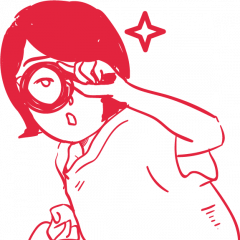|| O N O P E N S O U R C E T H I N K I N G ||
// Before the advent of the Internet, creators had their works protected by laws such as the Seldon and Ford copyright patents that helped to uphold the ownership of their works by legal means and prevent idea theft. An absolutist propriety code could be exploited by larger and more powerful companies or individuals (as with the Microsoft and Gates mentioned in Sida Vaidhyanathan’s essay Open Source as Culture-Culture as Open Source,) limiting the concentration of expertise to themselves. The limitations placed on idea sharing resulted in inefficient economic decisions. True ownership over material is also difficult to determine since “No one fully owns a book”, as Michael Walman says in his ‘Handbook on the Economics of Copyright’.
The introduction of open-source culture (OSC) by groups like Linux, liberated the restriction on human intellect capital by encouraging creators to give up ownership of their works completely or partially; in order for open collaboration and peer production to thrive. While licenses still exist to partially protect the intellectual property of creators, they promote the sharing of material in order to inspire and give birth to more innovative derivative information goods. With OSC, the notion that creators are solitary workers is no longer valid since it provided an opportunity for artists to utilise avant-garde platforms that transcended the physical boundaries of an artist. Such works, such as The Shredder, Glyphiti utilised the ‘metamedium’ that the platforms provide and incorporated interactivity, such that the participants or audience could determine the outcome of the artwork, instead of the artist, as showcased in Randall Packer’s article on Open Source Studio.
The code for the Linux operating system kernel was given away for free and has given rise to many distributions like the Steam OS (gaming) and Ubuntu (mobile devices) that support a myriad of software.

http://www.potatoland.org/shredder/shredder.html

http://artcontext.org/glyphiti/docs/index.php
Resources:
(1) Vaidhyanathan, Sida (2005) “Open Source as Culture-Culture as Open Source,” The Social Media Reader. New York: New York University Press, 2012
(2) Packer, Randall, Open Source Studio, IEEE Spectrum, 2015
(3) http://www.potatoland.org/shredder/shredder.html
(4) http://artcontext.org/glyphiti/docs/index.php
(5) Watt, Richard, eds. Handbook on the Economics of Copyright: A Guide for Students and Teachers. , (Cheltenham, UK: Edward Elgar Publishing, 2014)doi:
(6) What is Linux? by The Linux Gamer: https://www.youtube.com/watch?v=tFFNiMV27VY

